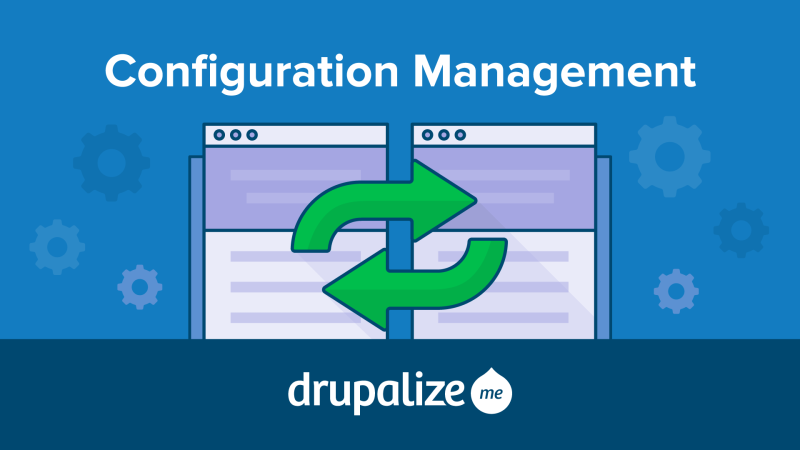
Today, we're excited to release a new series of Drupal 8 tutorials on Configuration Management.
With the launch of Drupal 8 comes a unified way of storing your site and extension (themes, modules and plugins) configuration data. The product of the (now retired) Configuration Management Initiative—the Configuration System—allows for a very effective development workflow, when leveraging tools like Drush and Git. It's not limited to developers however. The Drupal administrative UI provides forms for managing your site's configuration, too.
In this series of tutorials—containing both written tutorials and video walk-throughs—you'll learn all about the new configuration system in Drupal. This series has something for both site administrators and module developers. As a site administrator, you'll learn how to use tools within the administrative UI to manage your site's configuration. And for module developers, you'll learn how to leverage the configuration system in a custom module and integrate configuration management into your development workflow.
As a site administrator, you'll learn:
- Where to access Drupal's configuration manager tools in the administrative UI
- How to import and export configuration using the UI
- How to create a clone of a Drupal site using web-based tools, to practice deploying configuration
For module developers, you'll learn to utilize various configuration-related APIs by following along with a demo module, Transcode Profiles. You'll use tools such as Drupal Console, Drush, and Git, in addition to the Drupal 8 administrative interface. And you'll get hands-on experience creating a module that handles configuration data.
As a module developer, you'll:
- Create an Admin Settings Form for managing some simple configuration
- Create a Custom Configuration Entity
- Add a property to a Configuration Entity
- Change the Admin Settings Form to load and store Configuration Entity data, as part of our module's simple configuration
Tutorials:
- Overview of the Configuration System
- Configuration Sync Directory Setup
- Create a Clone of Your Drupal Site
- Clone a Drupal Site with GUI Tools
- Synchronize Configuration with the UI
- Synchronize Configuration with Drush
- Inspect Configuration with Drush
- Live vs. Local Configuration Management
- Configuration Interdependencies
- How to Override Configuration
- Set up and Use Configuration Split Module
- Automate Deployment of Configuration
We hope you'll enjoy learning how to manage configuration in Drupal 8!
Comments
This is good to know, very useful, thanks for sharing the knowledge.
Add new comment